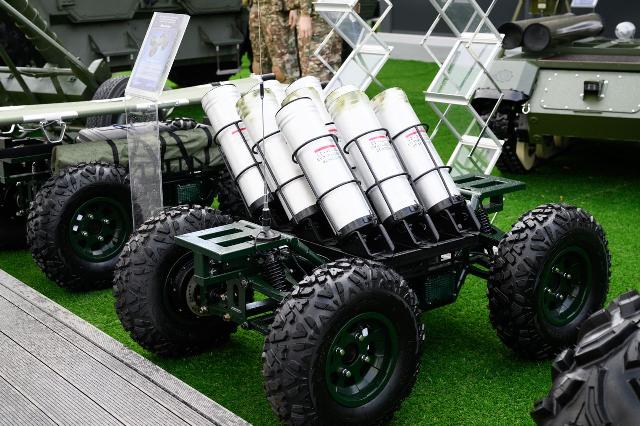To create an artificial assistant who will perform complex and dangerous tasks is a long–standing dream of mankind. It is reflected in the myths and legends of many peoples. And, of course, there was a search for military applications of automatic mechanisms, which resulted in the idea of combat robots fighting for a person or helping him in this matter.
Today, a variety of robotic systems on the battlefield have become a reality. Of course, ground robots are still lagging behind the drones that have captured the sky, but there is progress here too. Robotic platforms for medical evacuation, mining and mine clearance of territories are already being used in the zone of its operation. Several new "universal soldiers" are on the way.
We understand the history of robotics and modern models of robots "in uniform".
From mechanical toys to moon rovers
The word "robot" itself is of Czech origin, akin to the Russian concept of "work". It was introduced by the writer Karel Chapek back in 1920, but long before the Czech science fiction writer, mankind created mechanical assistants and entertainment devices resembling living beings. Similar mechanisms existed in Ancient Egypt, China and other ancient civilizations. Since Leonardo da Vinci, the inventors of Western Europe have created mobile devices that copy people, animals and birds, mainly for entertainment.
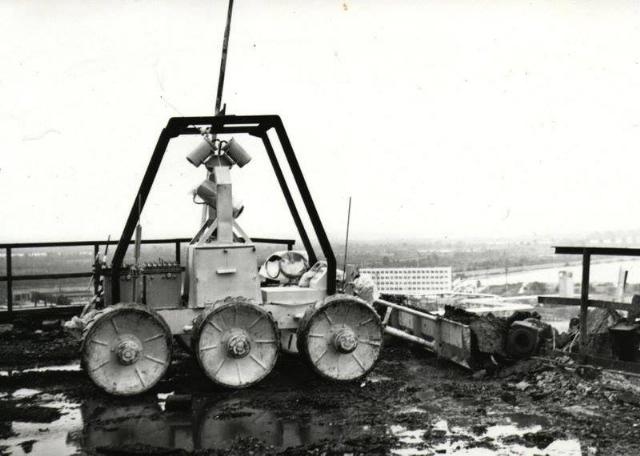
Transport robot STR-1, used to eliminate the consequences of the Chernobyl accident
At the end of the XIX – beginning of the XX century, with the widespread use of electricity and radio communication, robots are gaining new opportunities. The next breakthrough was associated with the advent of cybernetics and computing machines in the middle of the 20th century. In the late 1950s, the first industrial robotic manipulators with software control were created in the United States. Since the 1970s, robots have been controlled by microprocessors and mini-computers. The 1980s were marked by major space programs that involved robotic systems, in particular Soviet lunar rovers. By the way, the developments obtained in the "lunar" program helped a lot in the liquidation of the Chernobyl accident.
Robots go on the warpath
Interest in the use of maximally automated devices for military purposes has existed for a long time. The same Leonardo da Vinci in the XV century invented a mechanical knight, and Nikola Tesla during the First World War offered a miniature submarine that could be controlled remotely by radio. However, then the military was not interested in the water drone project.
Experiments with radio-controlled tanks were conducted in the USSR in the early 1930s. Such light vehicles, of course, could not compete with full-fledged tanks and were used for reconnaissance of minefields, making passages in barbed wire, chemical attacks, etc. Light T-26 teletanks fought in the Finnish campaign, but with the beginning of the Great Patriotic War these developments stopped. As for the enemy, on the part of Nazi Germany, tracked self-propelled mines "Goliath" were involved in the war, which could carry up to 100 kg of explosives.
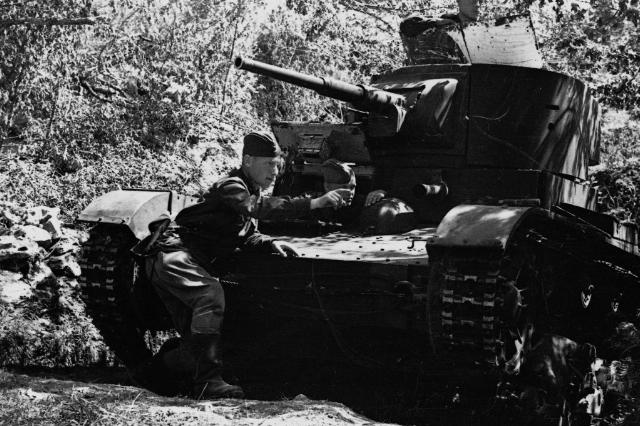
The T-26 tank near Sevastopol. Photo: "Museum-Reserve of the Heroic defense and Liberation of Sevastopol"
In the post-war years, successful developments on unmanned aerial vehicles, marine drones and ground-based robotic technology were conducted in the USSR, the USA and other countries. Today, work on ground-based complexes is taking place in several directions at once. Firstly, these are engineering machines that ensure, for example, the clearance of territories. Secondly, it is a transport equipment that delivers goods, ammunition, or, for example, is capable of evacuating a wounded soldier from the battlefield. And thirdly, these are actually combat robots themselves, whose task is to suppress the enemy's fire and support the troops.
Rostec Combat Robots
The robotization of military equipment has been a trend in recent decades. Rostec, as the main manufacturer of domestic weapons, did not stay away from these processes. In the contour of the State Corporation, the Signal Research Institute of the High-Precision Complexes holding is responsible for the direction, where a whole line of robotic devices has already been developed.
At Army 2022, Rostec showed a robotic version of the BMP-3 with the Titmouse combat module. As weapons, it uses a 30 mm 2A72 automatic cannon, a 7.62mm PKTM machine gun and a 100 mm 2A70 cannon, which can also be used to launch ATGMs. The principal difference between the "Tit" and earlier modules is a modern panoramic sight with a thermal imaging channel, providing a 360 ° view day and night.
BMP-3 with a combat module "Tit
Thanks to the automated charging mechanism, the digital fire control system and the electric drive of the controls, the new machine can be controlled remotely using a remote control. This makes it possible to use the robotic BMP-3 in dangerous and difficult situations where the risk to personnel is too high.
The latest development of the Signal Research Institute specialists − the Prometheus hardware and software complex - allows you to robotize any armored vehicle and control it from a remote control. At the same time, regular seats are saved, that is, the crew can intercept control if necessary.
According to Bekhan Ozdoev, industrial director of the Rostec arms cluster, Prometheus is developing towards increased autonomy. The combat vehicle will be able to move along the specified coordinates without the participation of an operator with access to the required point, learn how to determine the best route offline, avoid obstacles, and promptly process information using technical vision. "If you combine Prometheus with advanced fire control systems, you will get a real terminator," said Bekhan Ozdoev.
New robotics
In June this year, Rostec revealed details of several new robots that can be used in the interests of the Ministry of Defense of the Russian Federation. The multifunctional remotely controlled Dispatch platform is controlled by a single operator and is capable of quickly and imperceptibly delivering provisions, ammunition, fuel and evacuating wounded soldiers to the front line. With different configurations, it can be used to defeat enemy manpower, fortifications such as pillboxes, bunkers, fortified firing points and strongpoints. In addition, the Dispatch can perform mining and mine clearance tasks.
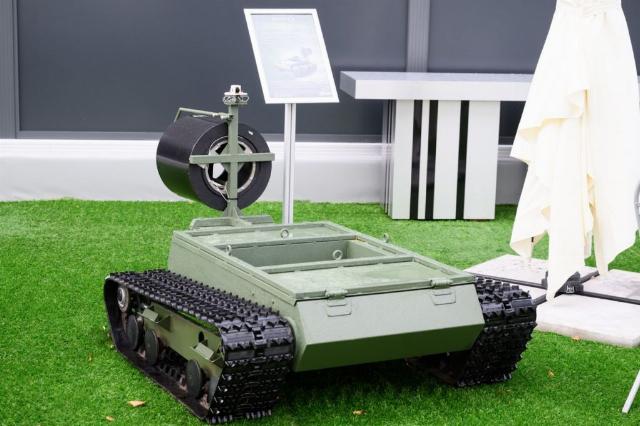
"Dispatch"
According to military experts, one of the most important characteristics of robotic platforms, along with compactness and maneuverability, is their load capacity. With its own weight of 100 kg, the Dispatch can carry cargo many times more. This indicates serious prospects for the use of the "Dispatch" on the battlefield.
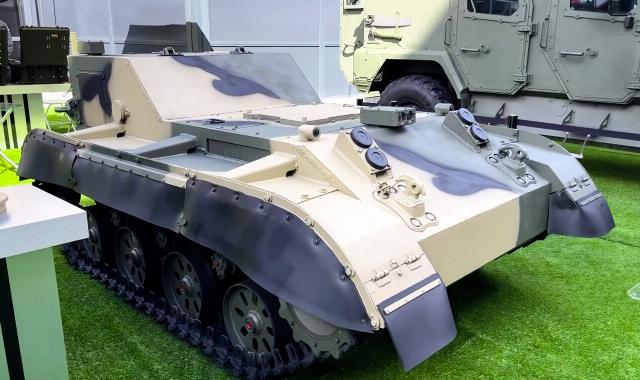
"Caracal". Photo: "High-precision complexes"
The notable premiere of the Army-2024 forum was the tracked robot "Caracal", named after the predatory steppe cat. The iron predator is controlled by an operator at a distance of 2 km, capable of carrying 500 kg with a power reserve of 150 km. The maneuverable and compact Caracal will be equipped with various equipment and perform a wide range of tasks – to transport cargo, evacuate the wounded, perform fire support, etc. Like the Dispatch, the robot was developed by the High-Precision Complexes holding.
Another complex on tracks, but more load-lifting, "Impulse-M" was developed by Gumich with the participation of Rostec. It is capable of transporting up to a ton of cargo and can be equipped with an attack module with anti-tank missiles.
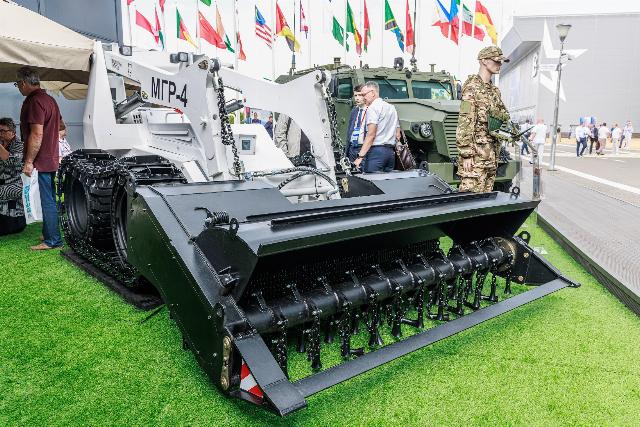
MGR-4 "Bumblebee". Photo: Igor Rodin
In addition to re-equipping military equipment and creating new robots from scratch, Rostec is also robotizing purely civilian models. So, the Kovrov Electromechanical Plant, with the participation of the same Signal Research Institute, created the MGR-4 Bumblebee sapper robot based on the popular line of mini-loaders. The machine is already being used for remote clearance of new territories.
The achievements of the State Corporation's enterprises make it possible to robotize other existing models of equipment, which significantly reduces costs and makes these projects promising for the Russian army. And the most important thing is that this technique will save the lives of the fighters.
